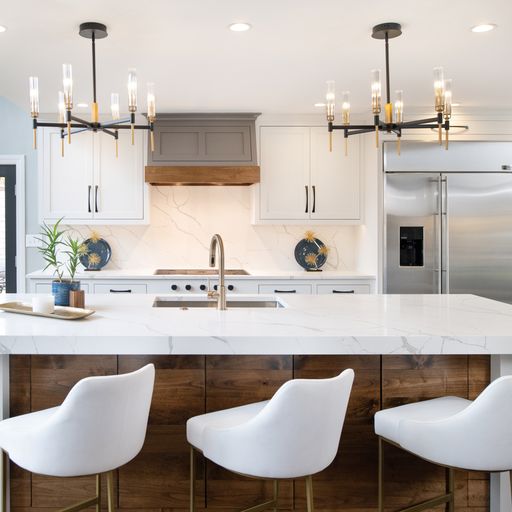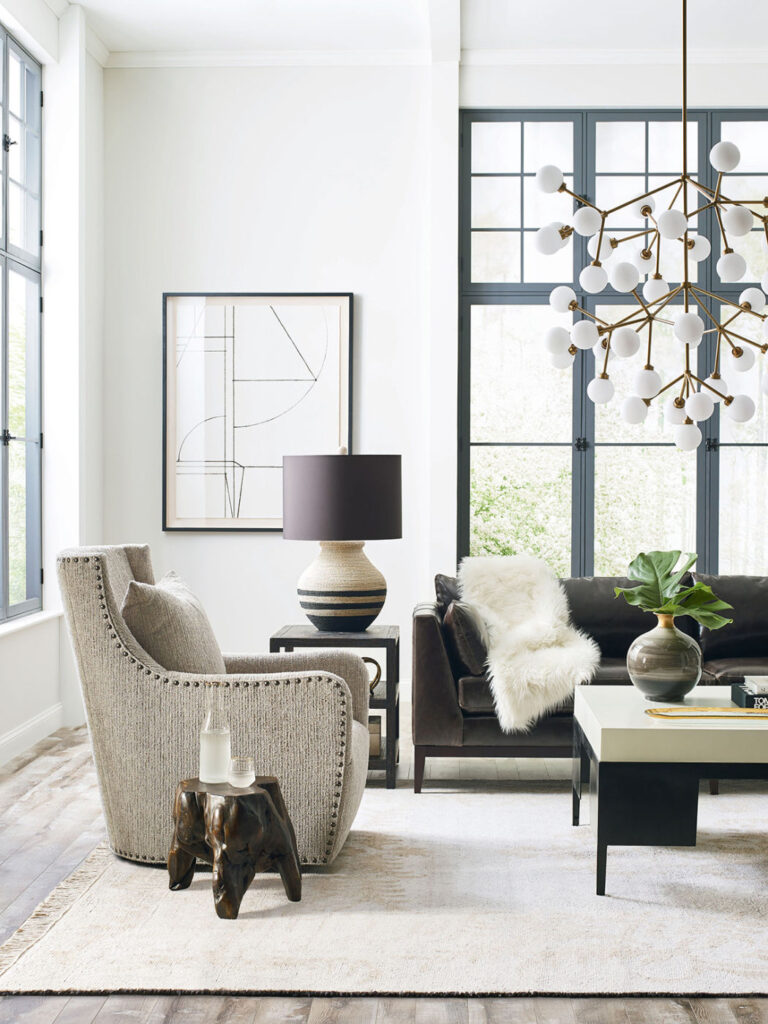 Interior Design/Interior Decorating
Interior Design/Interior Decorating
Principles of Interior Design: Part 1
What are the Principles of Interior Design and How to Use Them
Today I’m going to unlock the secrets of design by sharing the principles of design. And today I’m starting with the first three ones. Read on to learn more.

- Balance: How we create a sense of stability and harmony in a space by arranging (or balancing) objects evenly. There are three ways to achieve balance:
- Symmetrical: Identical or similar objects on both sides of a center point. In this kitchen I created a symmetrical balance with the chandeliers, blue plate grouping, and upper cabinets flanking the stove hood to make a powerful statement and draw attention to the focal point of the kitchen.
- Asymmetrical: The use of different objects with the same visual impact on both sides of a center point. To create an asymmetrical look in this kitchen I would swap out one of the blue plate groupings for another grouping of a similar size.
- Radial: Objects that radiate out from a common center point in a circular fashion.

2. Proportion: Refers to the relative size and scale of different elements within a composition such as a room. Think of proportion the like ingredients in a food dish – much like cooking, getting the proportions right is the key to success. In this beautifully designed living room, the small dark wood stool by the swivel chair feels too small in comparison to the other furnishings and room as a whole.
3. Contrast: Two or more objects or architecture in opposition to each other in a space such as light and dark or smooth and rough. In this living room, a high contrast between light and dark finishes create a dramatic look overall.
Stay tuned next month for Principles of Design: Part Two
Want to learn more about interior design trends and insider secrets from Kansas City’s interior designer and former host of Living Large design show? Sign up for our free newsletter now.
karen-mills.ck.page/8d0663c849
